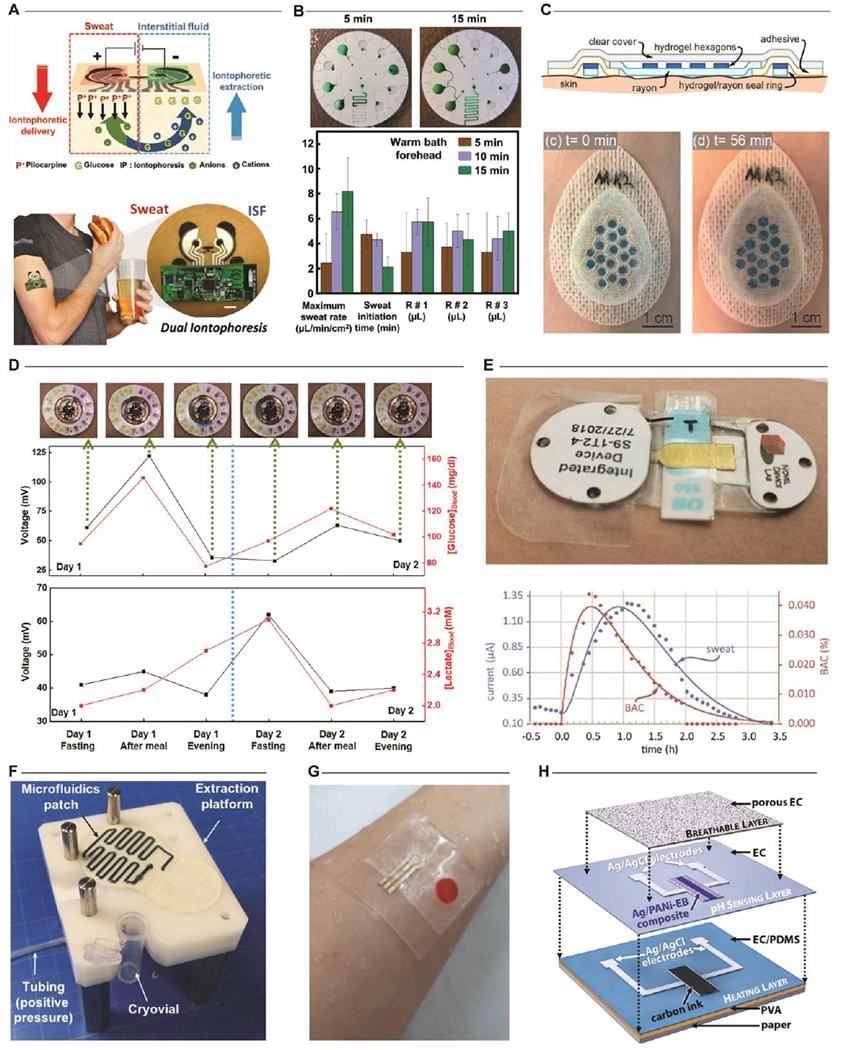Figure 3. Analytical Performance.

Sweat generation. Typical methods for stimulating a sweat response include stimulation by iontophoresis or exposure to thermal gradients arising from physical exertion. A. A representative example of a device that integrates iontophoretic stimulation and electrochemical analysis. Adapted with permission from Ref. [59]. Copyright 2018 WILEY-VCH Verlad GmbH & Co. B. Exposure to elevated temperatures during bathing (shower or bath) induces sufficient sweat for biochemical analysis. Adapted with permission from Ref. [30]. Copyright 2019 The Royal Society of Chemistry. C. Utilization of absorbent hydrogels enables collection of sweat generated passively during normal daily activities. Adapted with permission from Ref. [55]. Copyright 2020 The Royal Society of Chemistry. Sweat as a blood surrogate. D. One demonstration using an epifluidic sweat sensor correlates blood and sweat glucose concentrations over a multi-day period by periodic sampling. Adapted with permission from Ref. [29]. Copyright 2018 American Association for the Advancement of Science. E. A recent demonstration using a wearable electrochemical sensor with integrated iontophoretic stimulation correlates sweat and blood ethanol concentrations over a 4-hour period. Adapted with permission from Ref. [60]. Copyright 2018 The Royal Society of Chemistry. Contamination. F. Elimination of operator interaction through an optimized device-to-world interface minimizes contamination during sample extraction for external laboratory analysis. Adapted with permission from Ref. [61]. Copyright 2020 Elsevier. G. Optimization of fluid pathways enables strategies for minimizing biofouling of electrochemical sensor surfaces. Here, the embodiment utilizes on-demand sample measurements activated a finger-press to periodically measure sweat cortisol. Adapted with permission from Ref. [62]. Copyright 2020 Elsevier. H. Alternative strategies for mitigating biofouling rely upon multilayer sensor constructs or optimized coatings to maintain consistent sensor performance. Adapted with permission from Ref. [63]. Copyright 2020 Elsevier.
